
Resilient Maritime Logistics Website
The Resilient Maritime Logistics website (https://resilientmaritimelogistics.unctad.org) hosts a guidebook for ports aiming at Building Capacity to Manage Risks and Enhance Resilience. It features risk identification, assessment, and management tools and approaches, case studies, good practices and a step-by-step resilience-building process for ports and other relevant maritime supply chain actors. The guidance focuses on three types of resilience-building actions and measures, namely:
- Before a disruption materializes.
- During a disruption.
- After a disruption.
A course structured around six modules and focusing on Port and Maritime Supply Chain Resilience accompanies the guidance on this website. The training will help to better understand the importance of well-functioning maritime supply chains and ports for highly interdependent world economies and the need to build their resilience in the face of heightened, uncertainty and disruptions.
The Resilient Maritime Logistics website and related content and material aim to help stakeholders across the maritime supply chain to better manage risks, prepare in the face of disruptions, ensure effective response measures and enable rapid recovery. Targeted stakeholders include (i) governmental planning and regulatory agencies; (ii) port authorities; (iii) port operators and port management companies; (iv) terminal operators; (v) infrastructure managers; (vi) freight forwarders; (vii) customs authorities; (viii) carriers and shipping companies; (ix) shippers and cargo owners; and (x) inland carriers and inland logistics operators (e.g. dry ports, inland container depots, warehouses, logistics and distribution centres). Collaboration between each of these stakeholders is critical for maritime supply chain agility and resilience-building.
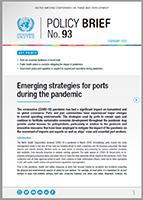
UNCTAD Policy Brief No. 93, Emerging strategies for ports during the pandemic
The coronavirus (COVID-19) pandemic has had a significant impact on humankind and on global commerce. Ports and port communities have experienced major changes to normal operating environments.
The strategies used by ports to remain open and continue to facilitate sustainable economic development throughout the pandemic may provide useful lessons for policymakers, particularly in relation to the protocols and innovative measures that have been employed to mitigate the impact of the pandemic on the movement of imports and exports as well as ships’ crew and essential port workers.
Key points:
- Ports are essential facilitators of world trade
- Public health advice is crucial in mitigating the impact of pandemics
- Government policy and regulation is required to support port operations during pandemics
The Model Subregional Agreement on Transport Facilitation
The Model Subregional Agreement on Transport Facilitation has been elaborated on the basis of findings of comparative studies between major subregional agreements on transport facilitation to which various ESCAP member States are parties, conducted in 2014-2015. It has been subsequently reviewed by two regional expert meetings held in 2015 and finalized with incorporation of ESCAP member States’ comments.
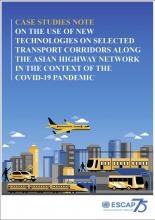
Seamless and smart connectivity along the Asian Highway network in the time of COVID-19
Freight transport operations poses the risks during the pandemics, especially if it is not fully computerized. As documents and goods continue to be subjected to physical checks for customs and other regulatory purposes, crew members and staff at border-crossing points and control terminals are exposed to the risk of contagion by the nature of their work. in this context, the use of information and communication technologies (ICT) and intelligent transport systems (ITS) is directly relevant to the pandemic response and recovery policies.Optimization of automation and digitalization can reduce the need for human interaction, making cross-borders transport safer and more resilient to disruptions. In this context, this technical note aims to offer policy recommendations for policy responses using new technologies and smart road solutions to preserve the regional transport connectivity in the time of the pandemics and other similar disruptions.
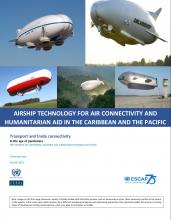
Airship technology for air connectivity and humanitarian aid in the Caribbean and the Pacific
The Hybrid Airship transport alternative has the potential to be a game changing technology with significant development in recent years. The aim of this technical note is to help raise awareness on airships as an innovative mobile services technology.
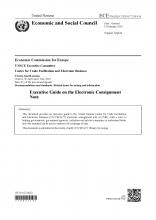
eCMR Standard package
The Convention on the Contract for the International Carriage of Goods by Road (CMR) was developed in 1956. This convention standardizes contractual and carrier liability conditions of transporting goods by road in vehicles for reward if the origin and destination are in two different countries, and at least one of the countries is a contracting party. It has been acceded to by 55 states around the world, thus making the use of the CMR obligatory in these countries. In 1976, the International Road Union introduced a United Nations Layout Key aligned CMR Note template in cooperation with the International Chamber of Commerce. This road consignment note template was updated in 2007 and is now used by most, if not all, parties to contracts of carriage in CMR contracting countries.
Impact of Covid19 on Transport in the Arab Region
The COVID-19 pandemic has triggered a global health and economic crisis that has transformed the world.
Questionnaires for banks
The surveys prepared by ESCWA targeting banks, firms and policy makers are aimed at gauging the conditions for trade financing in the region before and during the COVID-19 pandemic.
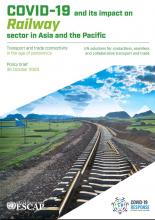
COVID-19 and its impact on railway sector in Asia and the Pacific
The policy brief explores challenges and opportunities for sustainable railway transport connectivity in the times of COVID-19 pandemic.
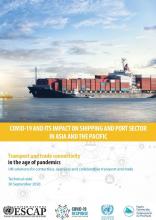
COVID-19 and its impact on shipping and port sector in Asia and the Pacific
The policy brief focuses on the impact of the pandemic on the shipping and port industry and the policy responses on COVID-19 in Asia-Pacific.